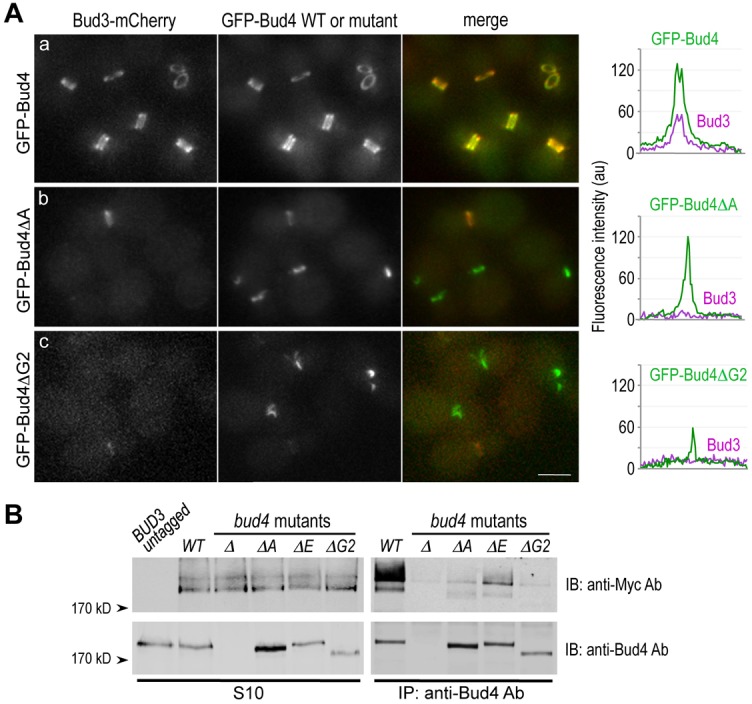Fig. 4.

DUF1709 and the PH domain of Bud4 are necessary for interaction with Bud3. (A) Localization of Bud3-mCherry in cells expressing (Aa) GFP-Bud4 (HPY2217), (Ab) GFP-Bud4ΔA (HPY2202) and (Ac) GFP-Bud4ΔG2 (HPY2249). A representative line scan of a cell with a large bud is shown along the mother-bud axis for each strain on the right. (B) Co-immunoprecipitation of Bud3-Myc with Bud4. Extracts of the BUD3-Myc strains [wild-type (HPY1511), bud4Δ (HPY1514), bud4ΔA (HPY2254), bud4ΔE (HPY2255) and bud4ΔG2 (HPY1991)] were subjected to immunoprecipitation using polyclonal anti-Bud4 antibodies. Bud4 and Bud3-Myc recovered by immunoprecipitation (right panels) and from the S10 fractions (left panels) were analyzed by immunoblotting with anti-Bud4 antibodies (lower two panels) and anti-Myc antibody (top two panels). The first lane shows the S10 fraction from the wild-type strain (HPY16) expressing untagged Bud3.
